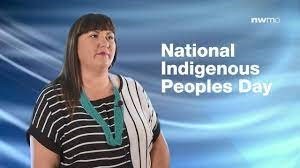NORTHWESTERN ONTARIO - It is extremely important to understand that building these kinds of relationships is as much important as building a relationship with the land.
Because when it comes to what is best for the environment, the issues are much more complex than taking a partisan stance on the burning question of what do we do with used nuclear fuel?
In 2002, the federal government tasked the Canadian energy sector with that question through the Nuclear Fuel Waste Act, and NWMO was formed to answer it.
In 2010, NWMO began selecting sites across Canada but found two places that had the right environment to house Canada’s nuclear waste.
As Canada began renewing their relationship it the First Nation people, NWMO installed policies that committed to reconciliation and by doing so introduced themselves to a wealth of knowledge beyond geological research, but an inter-disciplinary web of knowing.
Jessica Perritt, now director of Indigenous Innovation at the Turtle Island Institute and formerly on leave from the NWMO’s Indigenous Knowledge and reconciliation manager begins, “Indigenous knowledge systems is a term that is being used a lot these days. What’s really important to understand it really is that ancient wisdom has been part of our way of knowing, our Indigenous ways of knowing for millennia.”
Implementing the Indigenous knowledge stream into the DGR project. To begin with, NWMO instituted a council of Elders and youth to oversee the development of NWMO’s reconciliation policies and continued to educate science staff and engineers on how Indigenous knowledge aligns with their field of research.
“One thing I think that is a bit of a misconception is that it really is only about knowledge of the land,” said Perritt. “And within a western way of knowing, it [Indigenous knowledge] sometimes gets stuck in this place where the animals are migrating to or where medicines are growing. But it is so much richer and more sophisticated in that it is about governance, it is about law, and about the relationship to land, understanding the star laws and the cosmos.”
Indigenous knowledge is much more than a relationship to the natural world. It’s a stream of knowledge that incorporates philosophy, physics, engineering, medicine, politics, and biology.
“It’s important to understand the sophistication of Indigenous knowledge systems because much too often it gets really simplified,” said Perritt.
As humanity explored the different ways of knowing, thinkers began to spread their theories in interdisciplinary ways.
However, the complex ways of knowing to go even further when accounting for how language interrupts humanity's relationships.
The land has a story to tell, and all one needs to do is listen.
“It really is instructive within our Indigenous languages because our languages are so connected to place and what is happening around us,” explains Perritt. “So it’s really important that Indigenous Knowledge systems are grounded in language.”
Communication is fundamental to how humans interact with the world.
“Much like our rights, Indigenous Knowledge wasn’t something that was locked away at the time of contact and stuck there,” said Bob Watts, vice–president of Indigenous Relations and Strategic Planning. “It’s a growing body of knowledge. It’s a sharing body of knowledge. It’s taking into account present-day circumstances and the impact of our ancestors and the last seven generations and being thoughtful of the next seven generations. So, it’s not static.”
It’s an ever-changing body of knowledge that grows with humanity throughout the generations. And as generations progress, so does that body of knowledge.
“I think of the thing that is really important is the role that spirit has with knowledge, which some other knowledge systems that seem to be missing,” explained, Watts.
Since the separation of science and religion, western science negates including spirituality as a concept of knowing.
“Even in western science people talk about inspiration and not knowing where an idea came from, maybe that’s spirit,” said Watts.
Indigenous knowledge teaches that plants, animals, and the elements have a spirit and it is through that spirit which connects humanity to nature.
“We talk about spirit as we talk about ceremony as being part of knowledge. We talk about place as begin part of knowledge. Oftentimes, certain circumstances might be thought of depending on place and relationship to the land, the relationship to the water, the relationship to the air,” said Watts.
These relationships are at the core of principles when it comes to the understanding of how much research has gone into selecting a site where used nuclear waste should be stored.
Through workshop and consultation efforts with Indigenous People, there is a shared perspective on the ethical complexities of the project is attempting to achieve. Their lecture focused on applying the seven sacred grandfather teachings of love, trust, honesty, humility, respect, bravery, and wisdom to the NWMO’s work.
“I think it’s been a journey. I know in the early days there was a lot of wonder about, what is it we are getting into in terms of this recognition of Indigenous knowledge,” explains Watts.
Watts acknowledged how much help their council of Elders and youth were in incrementing Indigenous knowledge into NWMO’s workshops.
“Some of our geologists went out of the land with knowledge holder and kind of getting an understanding that rocks were talking to both of them, but being interrupted through a different lens and them being able to share that was very important,” explains Watts.
The exchange of knowledge aided in knowing where to find the environmentally friendly spot for the DGR.
Within the Indigenous worldview, the rocks are referred to as grandfathers. While describing the rock in a personalized way, generational knowledge gives weight to the connectivity between humans and the land.
In the context of geoscience, the NWMO’s approach to site characterization activities have been expanded by the knowledge that both western science and Indigenous knowledge. This new way of thinking about the land and humans’ relationship to it provides extra context when thinking about the safe storage of used nuclear waste.



